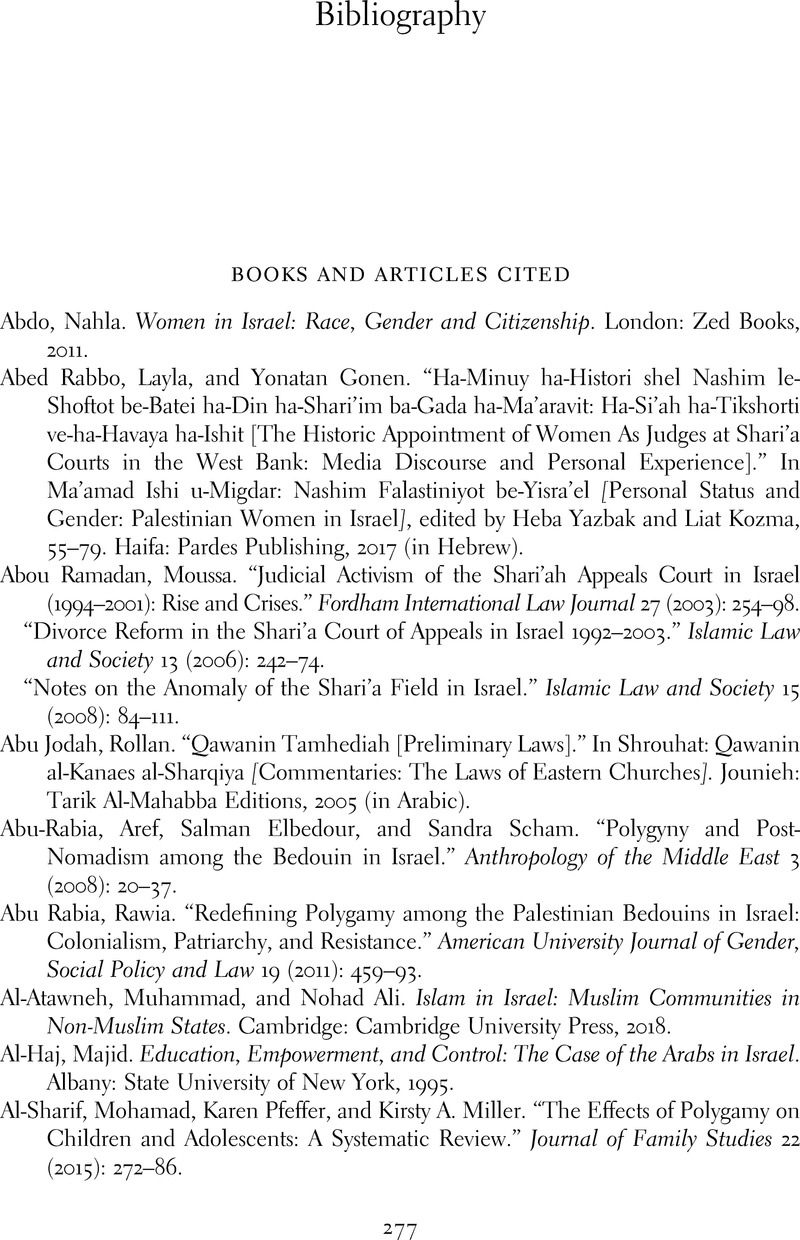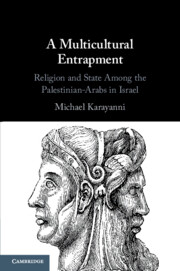Book contents
- A Multicultural Entrapment
- A Multicultural Entrapment
- Copyright page
- Dedication
- Contents
- Preface
- 1 Religion-and-State Conflict in Israel
- 2 The Janus-Faced Religion-and-State Conflict in Israel
- 3 Palestinian-Arab Religious Jurisdiction As an Individual Predicament
- 4 The Acute Nature of the Palestinian-Arab Individual Predicament
- 5 The Individual Predicament As Multicultural Entrapment
- 6 The Voice of No Exit
- Epilogue
- Bibliography
- Index
- References
Bibliography
Published online by Cambridge University Press: 08 January 2021
- A Multicultural Entrapment
- A Multicultural Entrapment
- Copyright page
- Dedication
- Contents
- Preface
- 1 Religion-and-State Conflict in Israel
- 2 The Janus-Faced Religion-and-State Conflict in Israel
- 3 Palestinian-Arab Religious Jurisdiction As an Individual Predicament
- 4 The Acute Nature of the Palestinian-Arab Individual Predicament
- 5 The Individual Predicament As Multicultural Entrapment
- 6 The Voice of No Exit
- Epilogue
- Bibliography
- Index
- References
Summary

- Type
- Chapter
- Information
- A Multicultural EntrapmentReligion and State Among the Palestinian-Arabs in Israel, pp. 277 - 316Publisher: Cambridge University PressPrint publication year: 2020

